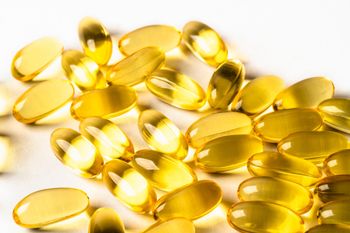
Microgreens More Nutritious than Mature Vegetables?
Analysis of 25 vegetable and herb seedlings finds that these microgreens are in some ways much more nutritious than mature vegetables.
New research on the
Trending in upscale markets and restaurants, microgreens are the seedlings of edible vegetables and herbs. They are characterized as having two fully developed cotyledon leaves-the first leaves of a seedling-and are harvested around 7 to 14 days after germination.
As popular as microgreens are becoming, USDA and University of Maryland researchers note that very little scientific information is available on microgreen nutrition. Writing in the Journal of Agricultural and Food Chemistry, they offer nutritional analysis of 25 microgreens: arugula, bull's blood beet, celery, China rose radish, cilantro, garnet amaranth, golden pea tendrils, green basil, green daikon radish, magenta spinach, mizuna, opal basil, opal radish, green pea tendrils, peppercress, popcorn shoots, purple kohlrabi, purple mustard, red beet, red cabbage, red mustard, red orach, red sorrel, sorrel, and wasabi.
In assessing each microgreen for vitamin C, vitamin E, vitamin K, and carotenoid (beta-carotene, lutein, zeaxanthin, and violaxanthin) content, the researchers discovered a wide variation of nutrition levels from plant to plant. In many cases, however, microgreens provided nutrient concentrations comparable to or much higher than that of commonly consumed vegetables, such as spinach and broccoli.
Here are some of the highlights:
- Four of the 25 microgreens had vitamin K levels comparable to spinach, generally considered an excellent source of vitamin K, and 18 of the 25 varieties had vitamin K1 densities equal to or greater than that of broccoli.
- Red cabbage microgreens scored highest in vitamin C. China rose radish, opal basil, and opal radish also provided substantial amounts of vitamin C, equal to 1.5 times the recommended dietary allowance (RDA). Each of these microgreen varieties offered more vitamin C than broccoli, generally considered an excellent source of vitamin C.
- Several microgreens provided beta-carotene levels as high as that of carrots or sweet potatoes. Cilantro seedlings offered three times as much beta-carotene as mature cilantro leaves, and red cabbage offered approximately 260-fold more than its mature counterpart. Every microgreen assayed was an excellent source of beta-carotene, except for popcorn shoots and golden pea tendrils.
- Cilantro microgreens, red sorrel, red cabbage, and garnet amaranth provide more lutein and zeaxanthin than mature spinach, which contains high amounts of both carotenoids.
Evidence of high nutrition contents for these microgreens could be used as a reference for choosing these vegetables in place of more traditional ones. The researchers warn that growing, harvesting, and postharvest handling conditions can significantly influence growth and degeneration of phytonutrients, and more studies are warranted on these influences.
The data referenced in this study for mature leaf nutrition came from the UDA National Nutrient Database.
Newsletter
From ingredient science to consumer trends, get the intel you need to stay competitive in the nutrition space—subscribe now to Nutritional Outlook.





